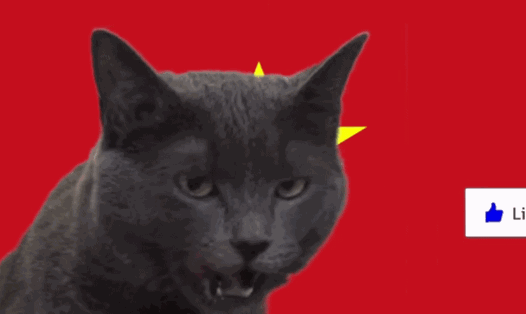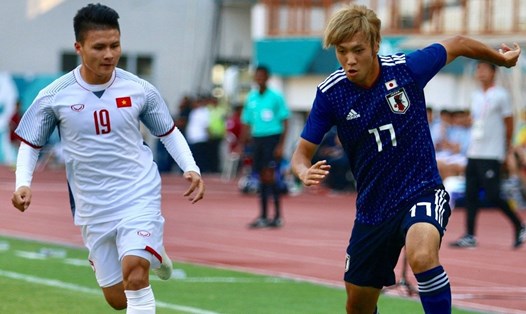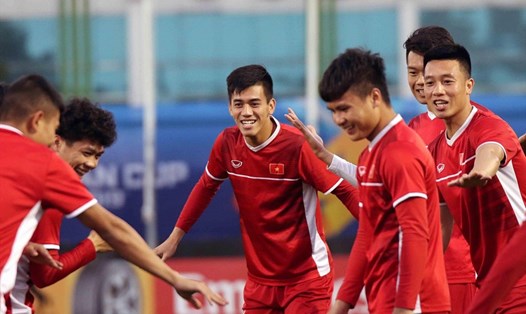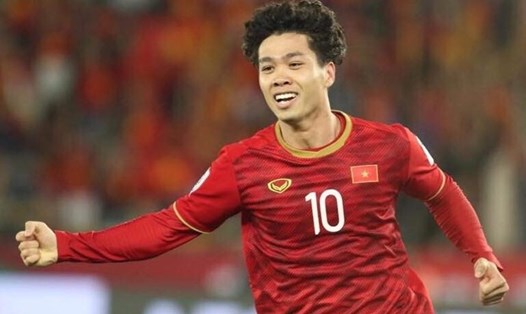Since the 1998 World Cup, Japan has never been absent from the world's biggest football festival. From the mindset of a team paving the way, predicting numbers to showing off strength, Japanese football has improved at an unprecedented speed, leaving behind a period of more than 50 years in the mid-20th century of extinction and continuous absence.
10 years before the 1998 World Cup, the 1988 Asian Cup marked the first time the "blue Samurai" returned to the continental playground after decades of self-defection. Few people know that, to return to the continental and world playgrounds, the generations of Japanese players at that time were fueled by the legendary comic book series: "Tsubasa - The Dream of the Grassfield".
Released in 1981, the drawings of superstar Takahashi Yoichi touched the wishes of millions of children growing up in the land of the rising sun. The image of Japanese players who could fly on the pitch, make shots like a cloud, showing the skills that were only available to superheroes became the idol of all children at that time.
Not only playing good football, stars in stories like Tsubasa or Kojiro also have a way of life and human behavior. Above all, they have a love for the ball, strong national pride, and determination to bring Japanese football to the world. Tsubasa's U17 World Championship and his Barcelona appearance are the embodiment of what he thought he was dreaming.
After "Tsubasa - The Dream of the Grassfield", the series of stories "The Road to the goal" is a step higher in the love and purity that every Japanese person desires in football. The Jindo boy with a small stature, only over 150cm tall, has stirred up an entire generation of readers not only in Japan but also spread around the world.
Jindo, small but can defeat any opponent in high school with skills that no one has. After a failed first season, he stood up and succeeded just 1 year later. At the end of the story, those comic book heroes once again talked about their World Cup dreams, where they would be compared to the stars they had only seen on TV before.
For the Japanese and their Japanese culture, each superhero character depicted contains the desires and wishes of a nation. Through people like Tsubasa or Jindo, the image of the people, players and Japanese football is widely spread.
The match between Japan and Belgium at the 2018 World Cup was a moment of pride in Tsubasa that the Japanese expressed. Instead of the country's great leaves, fans of the land of the rising sun replace it with a picture of a miserable Tsubasa holding hands together in the stands.
Tsubasa there, holding the gold trophy with his teammates behind as a warm-up for Kagawa and other stars on the pitch. At the World Cup in Russia a year ago, behind the shirt of every Japanese player, all comic book football idols such as Tsubaba, Jindo, Kojiro, ... were printed highlighted on the shirt numbers.
Indeed. The "Samurai Blues" played well against the Belgian championship candidate and only lost 2-3 in a 2-goal lead. They stopped at the round of 16 with regret. However, witnessing the remarkable maturity of the players on the pitch, Japanese fans have the right to be proud of them.
The 2019 Asian Cup is an opportunity for the blue team to recover the debt of 4 years ago when they lost to Australia in the final. With what we have, if we win another championship, it will be a common theme for Japanese football to more specifically express the position of the team representing the whole of Asia.










